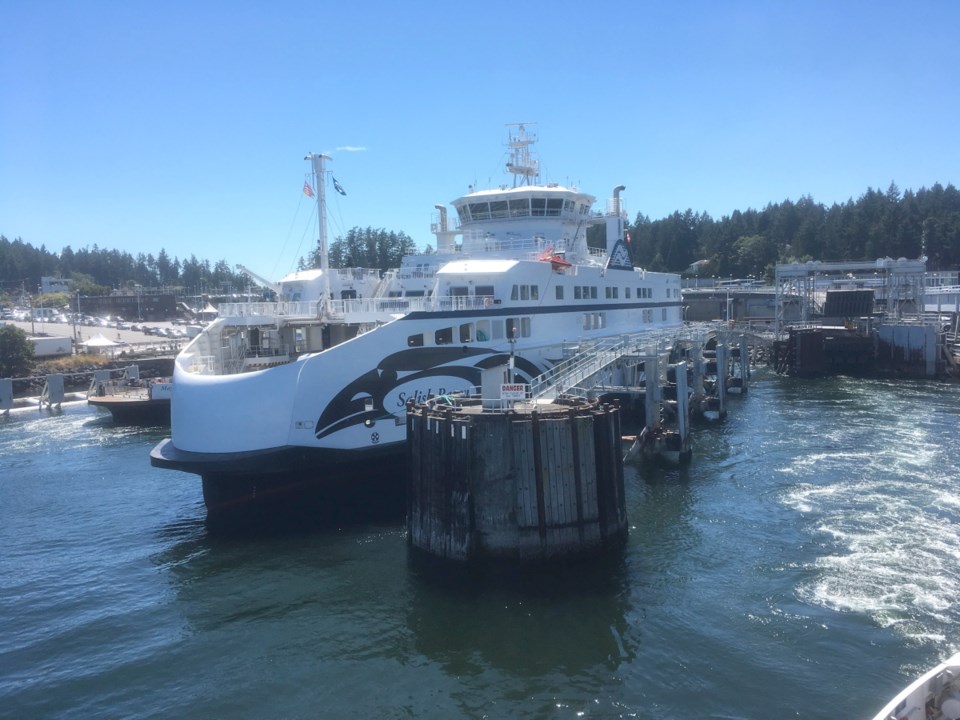B.C. Ferries says the few glitches and snags — including trouble fuelling one of its new Salish-class vessels — experienced since the ships went into service this summer are nothing out of the ordinary.
“It’s very typical and quite normal,” said Mark Wilson, B.C. Ferries vice-president of community engagement. “These are first-in-class ships we’re building for B.C. Ferries. The new ships we have are a prototype for B.C. Ferries and a prototype for the industry and you’re going to come up with some snags and stuff like that.”
There have been complaints from customers about the steepness of staircases on the ships and elevators not functioning, as well as a new kind of fire door that some have said is needlessly complicated and slow to open.
The Salt Spring Island Ferry Advisory Committee addressed what it called “teething problems” at its fall meeting, noting there were air-conditioning problems that affected the galleys on the Salish vessels, elevator reliability issues and door problems.
Wilson said all of the problems are being dealt with, and none of them will cost B.C. Ferries or its fare payers a dime.
“All of these things we are experiencing are covered under our contract,” he said, noting all elements of the vessels are covered under a one-year warranty, with some systems being covered under a two-year program. “Our customers aren’t paying for this as this is a fixed-price contract and the contractor is honouring the warranty.”
The three Salish-class ferries arrived in B.C. and were put into service this summer after sailing 10,440 nautical miles from the shipyard where they were built in Gdansk, Poland.
They were built at an overall cost of $200 million and have the capacity to run on either liquefied natural gas or diesel.
Wilson said the Polish shipyard that built the ships has people here, as well as agreements with contractors in B.C. to do some work.
Other repair work will be contracted out to local shipyards.
Wilson said B.C. Ferries experienced small warranty-covered issues with the German-built Coastal-class vessels and the locally built cable ferries.
The most pressing problems the Salish-class ferries have is a galley design issue concerning cooling that will require an engineered solution.
It is expected to be fixed in the spring, and will require the vessels to be rotated out of service for a period of time.
The vessels will also be rotated out of service to fix a technical issue that affects the ability of one of the vessels to take on liquefied natural gas.
Normally, to fuel the ships, a Fortis truck drives on board and hooks into the system. But a sensor is not working properly, shutting down the bunkering process.
“We know the fix for that one,” said Wilson. “It should be fixed within the month.”
Wilson said they have tweaked the new fire doors, which swing instead of slide, but he stressed they are there for safety.
As for complaints about the steepness of stairs, Wilson said they are well within guidelines but they could be altered on ships that have yet to be ordered.
B.C. Ferries has plans to add about one ship a year for the next 12 years.
The addition of the Salish-class vessels meant retirement for the 52-year-old Queen of Burnaby and the 53-year-old Queen of Nanaimo.
The Salish Orca plies the waters between Powell River and Comox, while the Salish Eagle and Salish Raven operate on the Tsawwassen-Southern Gulf Islands route.
“We have had only one snag in terms of reliability, meaning we missed one round-trip on one ship,” he said. “From a project perspective, it has been a very successful integration into service.”



